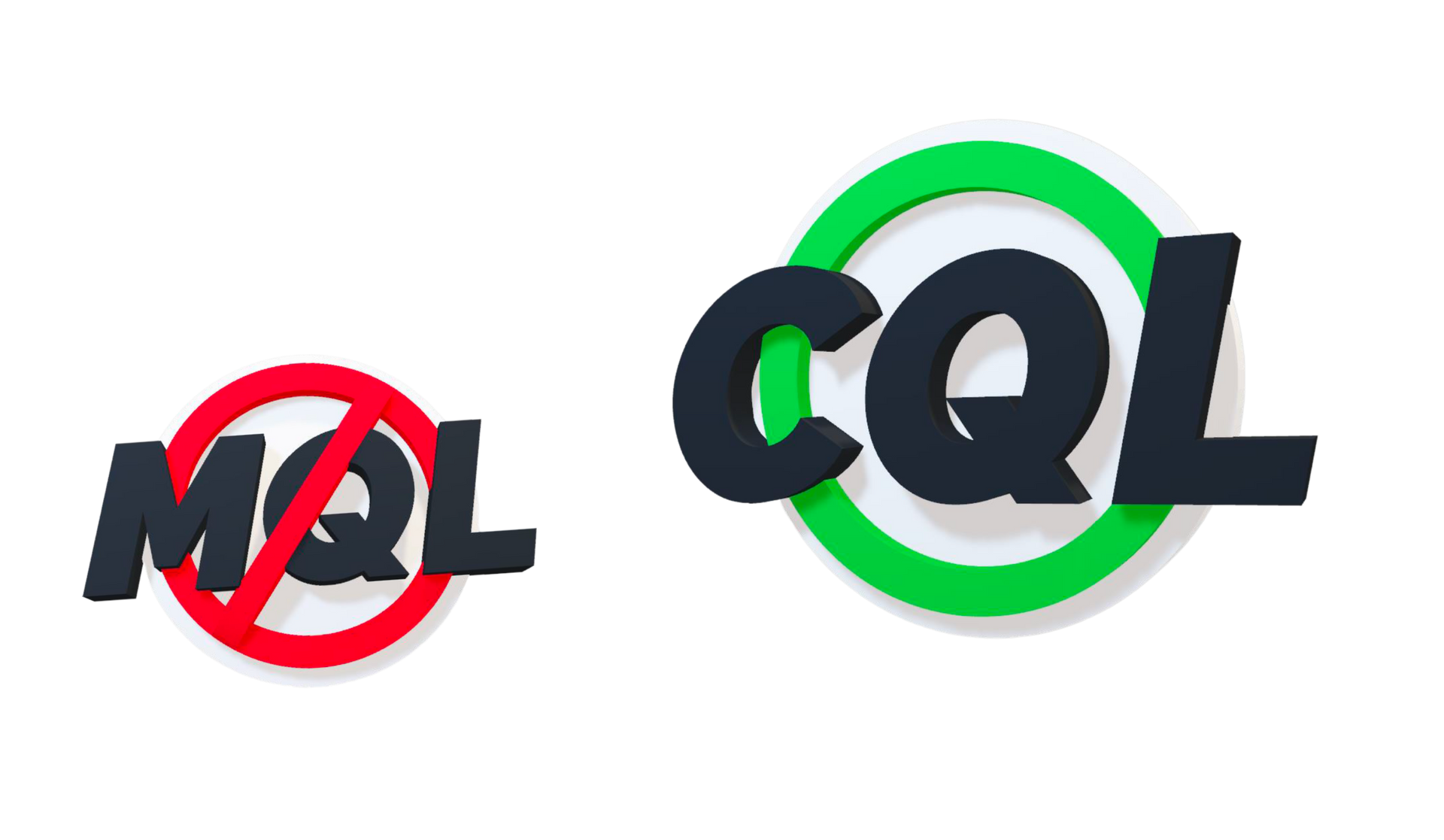It’s time to call it: the MQL is dead.
The Death of the MQL
Welcome to the Era of Conversation Qualified Leads (CQL)
For decades, Marketing Qualified Leads (MQLs) has been a cornerstone of sales and marketing alignment—or, more accurately, misalignment. The MQL model has been a source of constant tension, often playing out like a recurring scene from Groundhog Day in C-suite meetings. Marketing delivers MQLs that are often low-quality or unready. Sales dismisses them as a waste of time. Both sides point fingers, and CEOs are left struggling to identify where the real issue lies.

Why the MQL Model Fails
The core issue with MQLs is that they prioritize volume over quality. Marketing teams are measured and incentivized by the number of MQLs they produce, often leading them to categorize contacts as “qualified” simply because they’ve filled out a form to download a piece of gated content or stopped at your booth at a trade show. These individuals are often far from being ready for sales to engage.
Enter Conversation Qualified Leads (CQLs)
The solution to this long-standing friction is not refining the MQL process but replacing it altogether. Enter CQLs - a new approach powered by advanced technology and intent-based insights to which identifies the prospects that are ready for a conversation.
A CQL is a lead that meets three critical criteria:
- Fits the Ideal Customer Profile (ICP): They are in your target market and are part of the buying group.
- Actively in Market: They are demonstrating clear buying intent, by actively researching technology, business problems, competition and solutions you provide.
- Specifically Identified: Instead of vague, account-level intent signals, a CQL pinpoints the individual within the account buying group who is actively researching on the web.
The Role of Technology in CQL Success
Traditional buyer intent tools focus on identifying companies showing intent. While helpful, this approach leaves a critical gap: identifying who within the company is doing the research. By the time your team narrows down the right contact, your competitors may have already reached them.
This is where innovative solutions like Delivr.ai come in. Delivr.ai goes beyond delivering account-level intent signals to identify the exact individuals in your ICP who are actively searching for your solution. This allows sales and marketing teams to focus their activation strategies on the most promising leads, improving efficiency and alignment across teams. The system has already qualified them as conversation ready!
Why CQLs Matter
- Efficiency at the Top of the Funnel: With CQLs, marketing efforts are hyper targeted on those that are in-market helping to convert them and reducing wasted spend to the broader markets.
- Sales and Marketing Alignment: By delivering fact-based insights about who is in-market, CQLs create a shared understanding and alignment on improving the tactics to convert the prospect.
- Faster Time to Engagement: Identifying the right person immediately enables faster outreach, improving conversion rates and pipeline velocity. The first vendor to engage with a prospect wins over 60% of the time.
A New Era for Revenue Teams
The death of the MQL marks the beginning of a new, more productive relationship between sales and marketing. CQLs represent the future of demand generation: precise, actionable, and directly tied to proposed demonstrating buying intent.
With tools like Delivr.ai leading the charge, businesses can finally break free from the MQL hamster wheel and build a more aligned, efficient, and impactful revenue engine.
Goodbye, MQL. Hello, CQL!


